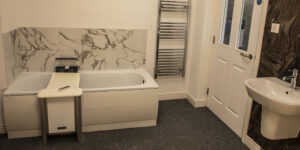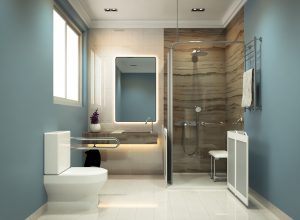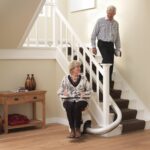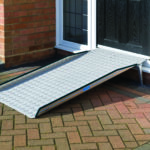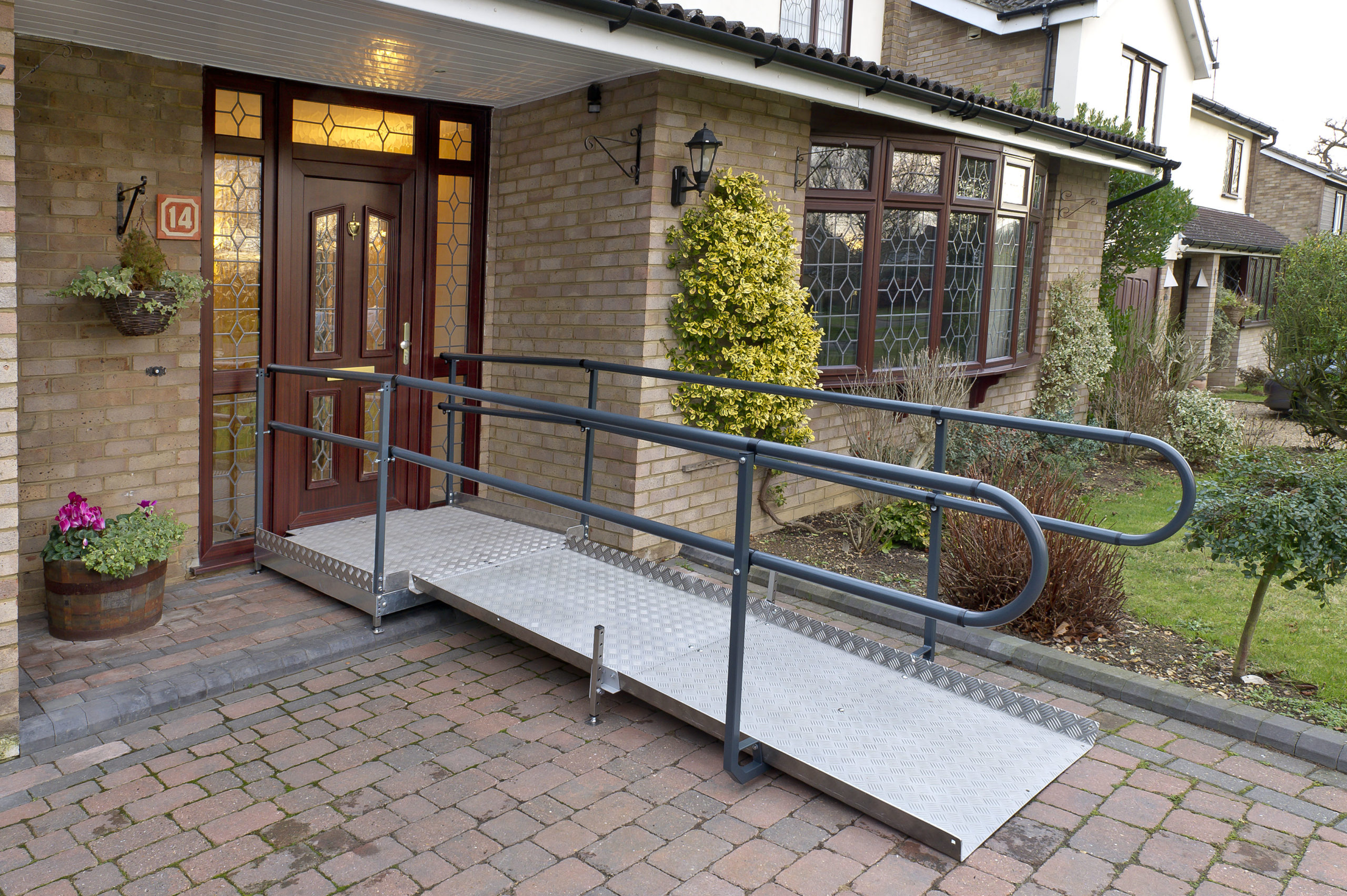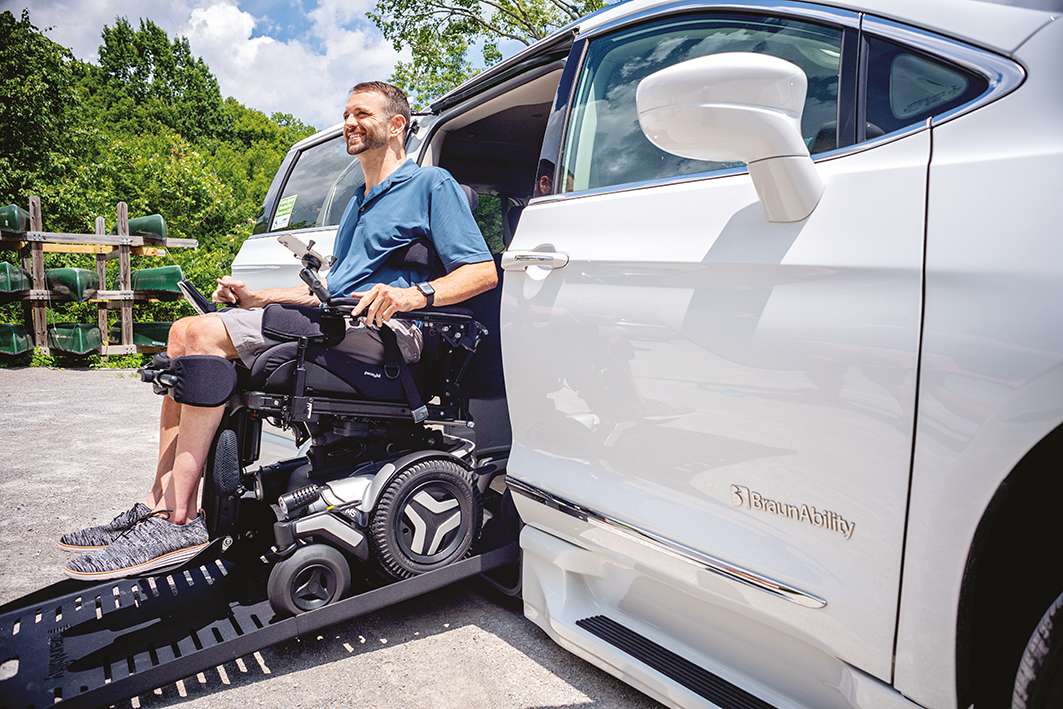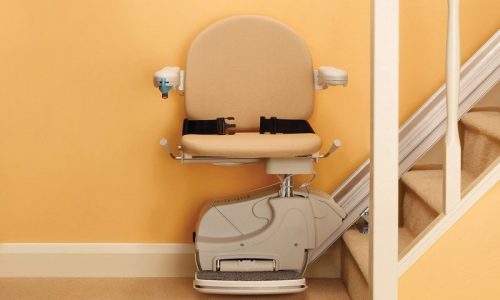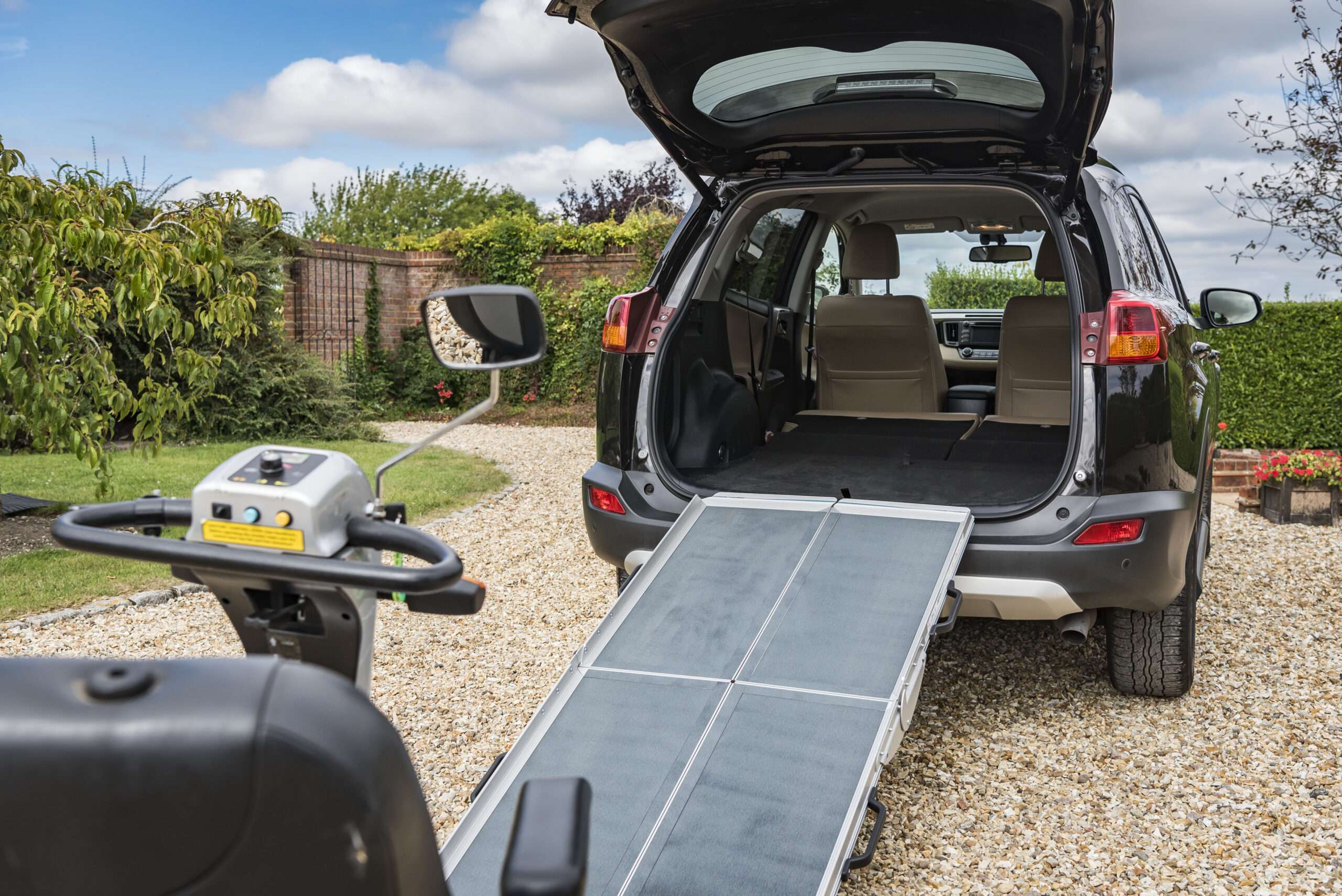Installing disabled ramp systems outside home entrances is an essential need for many wheelchair users, where steps and thresholds pose barriers to access.
With the range of wheelchair ramps and access systems out there, it’s easy to get confused by the numerous options available when trying to decide what disability ramp will work best for your property.
As an experienced home adaptations provider, we have worked across the whole spectrum of permanent ramp systems, and can help guide your decision-making with this analysis of the two main types of outdoor ramp systems: wooden and metal.
Jump straight to…
Wooden Ramping Systems: Pros and Cons
Custom-built wooden ramps can look attractive and blend in tastefully to domestic properties, particularly older more period-style houses where the wood complements the stonework or wooden architecture.
All our wooden ramp systems use tanalised timber to preserve the wood and prevent decay. We also recommend fitting grip-deck strips to the ramp surface, as wooden ramps can become slippery when wet.
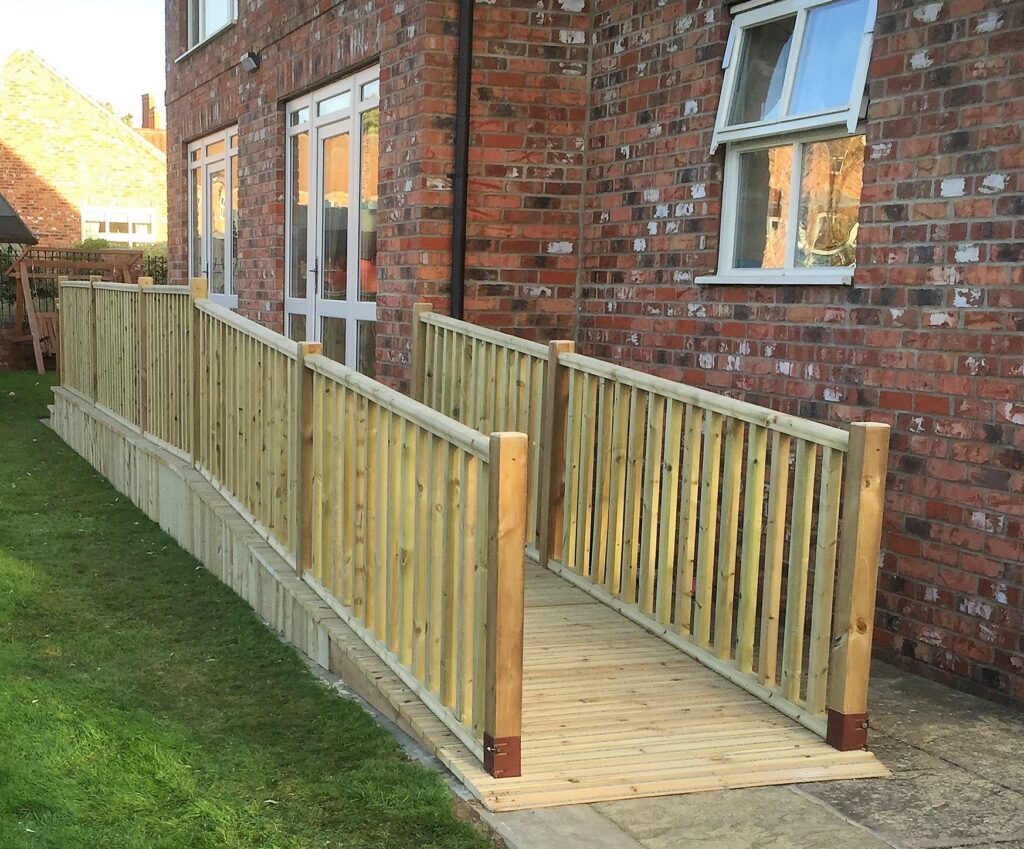
Pros
- Blend in better with domestic properties
- Can be made completely bespoke to fit in with the surrounding environment
- Can be fully enclosed or screened depending on the client’s requirements
- Many different styles and finishes available, for example a greater range of handrails
Cons
- Take longer to install, with concreting posts into the ground and skilled joinery work, increasing installation cost
- Create a potential fire risk, which would need to meet regulations for a public building
- May need maintenance work after a certain amount of time to keep in good condition, e.g. retreating and replacing boards.
The big advantage of wooden ramps is that you can customise them to your style of property to create a ramp solution that is both functional and aesthetically pleasing. The flipside to this however is they are harder to install, requiring more skilled labour, and can cost more to maintain over time.
Metal Ramping Systems: Pros and Cons
Metal ramp systems are chosen for their ultimate strength and durability over against their wooden counterparts, but can look out of place for some people with their more utilitarian appearance.
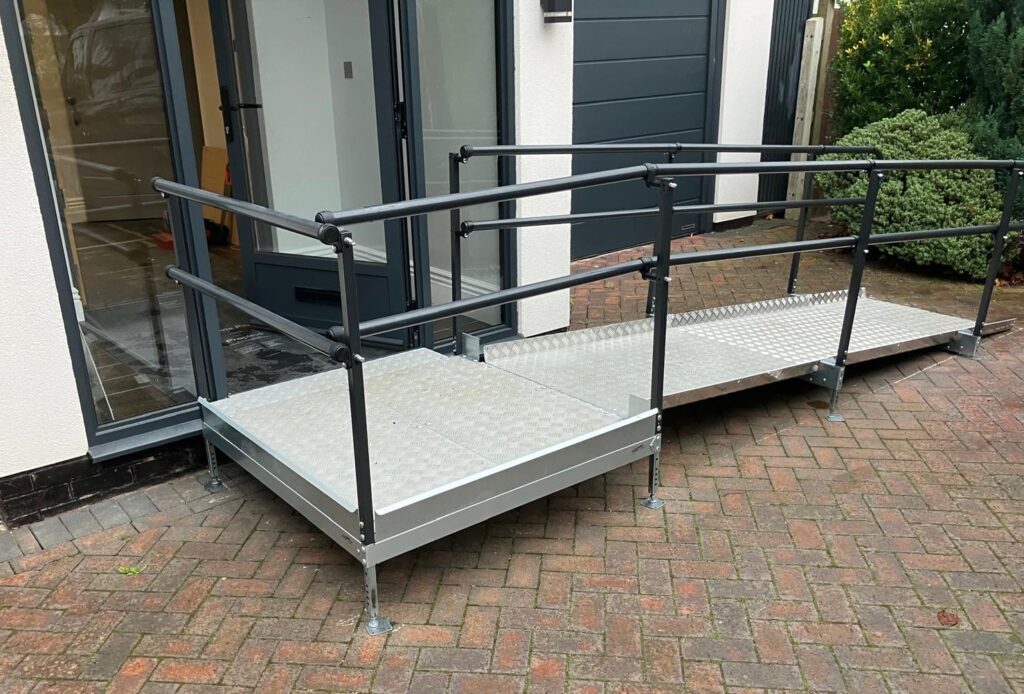
Pros
- Metal ramps can be more economical to install as they use less materials
- Steel and aluminium provider greater strength and durability than wood
- They are usually easier to install, with metal posts that fit on top of the underlying surface with feet or fixings
- Modular metal ramps systems are easier to dismantle and reinstall, making temporary or semi-permanent options available
- Materials are corrosion-resistant and last longer, and are relatively maintenance-free
- Minimal machinery and tools are needed for installation, and materials are easier to transport.
Cons
- Less ability to customise and adapt to bespoke sizes
- Can take up more space, as the supports sit to the side of the ramp platform
- Can look out of place with domestic properties
Metal ramp systems are more compatible with hard surfaces and concrete paths, as there are less fixings needed. Metal ramps are standard-issue for NHS or council-funded installations, and are often used for schools, commercial premises and public-sector spaces.
Disabled Access Ramps Compared: Wood vs Metal
| Wooden | Metal | |
| Environment | Older domestic properties
Brick/stone traditional build Privately funded |
Commercial and public sector buildings
Newer and more modern properties Publicly-funded installations |
| Installation | Any ground surface
Can be customised to property exterior, fitting around existing decking or pathways Longer, more skilled installation |
Hard/concrete surfaces
Less customisable, more standardised and modular Quicker installation, less fixings required |
| Longevity | Wood needs to be treated and may degrade over a long period of time if not maintained | Corrosion-resistant and relatively maintenance-free |
Finding the Best Ramping System for Your Needs: Our Recommendations
In our experience, custom-built wooden ramp systems can blend in better with existing landscaping and pathways, or be built as part of a larger decking or patio area to transform your outdoor space.
They look more attractive than metal outside the front of a traditional domestic property, and as a permanent installation can add a valuable touch to your ‘forever home’.
Metal ramp systems such as the Welcome Ramp can look less discreet outside domestic properties, but are good if you need a semi-permanent installation, for example at a rental property, that can be relocated if you move.
Metal ramp systems meet more stringent regulations for schools and public properties, making them ideal for public spaces, and are more suited to commercial buildings such as offices.
Frequently Asked Questions (FAQs)
Do metal ramps require maintenance?
While metal disability ramps are generally low maintenance, occasional checks for corrosion, loose bolts, or debris build-up are recommended to ensure safety.
Can a wooden ramp be treated to last longer?
Yes, using treated timber and applying protective coatings can help extend the lifespan of a wooden ramp. Regular maintenance, such as reapplying sealants and replacing worn boards, is essential.
What is the best ramp option for a rental property?
Modular wheelchair ramps are ideal for rental properties since they can be easily removed or adjusted as needed. Metal modular ramps in particular provide a durable and temporary accessibility solution.
Do wheelchair ramps need to meet specific regulations?
Yes, ramps for wheelchairs must meet safety and accessibility regulations, including proper gradient, handrails, and non-slip surfaces. Public and commercial installations have stricter requirements than private homes.


